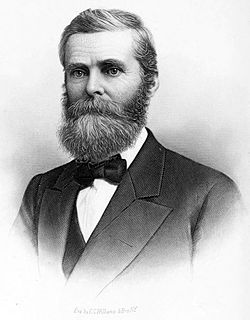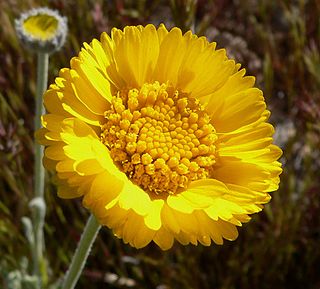
John Torrey was an American botanist, chemist, and physician. Throughout much of his career, he was a teacher of chemistry, often at multiple universities, while he also pursued botanical work, focusing on the flora of North America. His most renowned works include studies of the New York flora, the Mexican Boundary, the Pacific railroad surveys, and the uncompleted Flora of North America.

Asa Gray is considered the most important American botanist of the 19th century. His Darwiniana was considered an important explanation of how religion and science were not necessarily mutually exclusive. Gray was adamant that a genetic connection must exist between all members of a species. He was also strongly opposed to the ideas of hybridization within one generation and special creation in the sense of its not allowing for evolution. He was a strong supporter of Darwin, although Gray's theistic evolution was guided by a Creator.

Charles Christopher Parry was a British-American botanist and mountaineer.

Gaylussacia is a genus of about fifty species of flowering plants in the family Ericaceae, native to the Americas, where they occur in eastern North America and in South America in the Andes and the mountains of southeastern Brazil. Common English names include huckleberry and "dangleberry".

Baileya is a genus of plants in the aster family Asteraceae. All are native to the southwestern United States and to Mexico.

William Starling Sullivant was an early American botanist recognized as the foremost authority on bryophytes in the United States.

Geraea is a genus of the family Asteraceae from the southwestern United States and northwestern Mexico, commonly called the desert sunflower.
Hoverter and Sholl Box Huckleberry Natural Area is a 10-acre (4.0 ha) natural area in Perry County, Pennsylvania, near New Bloomfield, which protects a colony of box huckleberry over 1,000 years old. The smallest Natural Area in Pennsylvania, it is administered as part of Tuscarora State Forest. It was designated a National Natural Landmark in April 1967.

Gaylussacia brachycera, commonly known as box huckleberry or box-leaved whortleberry, is a low North American shrub related to the blueberry and the other huckleberries. It is native to the east-central United States.
Trichocoronis is a genus of North American aquatic plants in the tribe Eupatorieae within the family Asteraceae. Bugheal is a common name for plants in this genus.

Gaylussacia baccata, the black huckleberry, is a common huckleberry found throughout a wide area of eastern North America.

Huckleberry is a name used in North America for several plants in the family Ericaceae, in two closely related genera: Vaccinium and Gaylussacia. The huckleberry is the state fruit of Idaho.

Moses Ashley Curtis was a noted American botanist.
Dichaetophora is a genus of flowering plants in the family Asteraceae.

Gaylussacia dumosa is a species of flowering plant in the heath family known by the common names dwarf huckleberry, bush huckleberry, and gopherberry. It is native to eastern North America from Newfoundland to Louisiana and Florida. It occurs along the coastal plain and in the mountains.

Gaylussacia frondosa is a species of flowering plant in the heath family known by the common names dangleberry and blue huckleberry. It is native to the eastern United States, where it occurs from New Hampshire to South Carolina.

This George Engelmann bibliography provides an overview of works written by the 19th century scientist George Engelmann. They appeared mostly in journals such as the London Journal of Botany, the Botanischen Zeitung, the Boston Journal of Natural History, the American Journal of Science and Arts, the Transactions of the Academy of Science of St. Louis, the Proceedings of the Academy of Natural Sciences of Philadelphia, the Bulletin of the Torrey Botanical Club, the American Naturalist, and the Botanical Gazette or the Gardeners' Chronicle.

Gaylussacia nana, the dwarf dangleberry or Confederate huckleberry, is a plant species native to the coastal plains of the southeastern United States. It has been reported from Louisiana, Alabama, Mississippi, Georgia, Florida, North Carolina and South Carolina. It is found in either wet or dry soil, in woodlands, bogs, sandy ridges and savannahs, usually at elevations less than 100 m.

Ambrosia salsola, commonly called cheesebush, winged ragweed, burrobush, white burrobrush, and desert pearl, is a species of perennial shrub in the family Asteraceae native to deserts of the southwestern United States and northwestern Mexico.
Gaylussacia tomentosa, commonly known as the hairy dangleberry or hairytwig huckleberry, is a plant species native to the coastal plains of the southeastern United States.
















